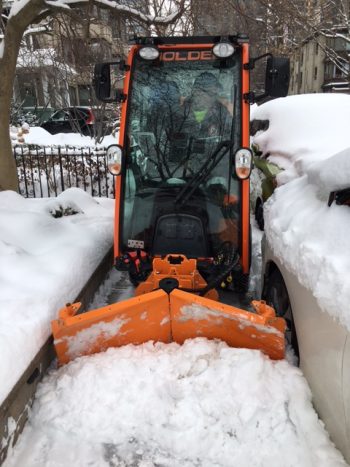
| Snow Accumulation | Snow Clearing Responsibility |
|---|---|
| Less than 2 cm | Residents and businesses clear sidewalks adjacent to their property of snow and ice within 12 hours of the end of a snowfall. |
| 2 cm or more | City crews clear all public sidewalks |
If snowfall accumulation is 2 cm or less in depth, it is up to residents and businesses to clear their sidewalks of snow and ice within 12 hours of the end of a snowfall.
Property owners are responsible for clearing ice and snow from private property – including driveways, parking spaces, steps, ramps and landings – within 24 hours after snowfall ends to provide safe access for people and vehicles.
You can contact 311 to report a property owner who did not clear their sidewalk or private property.
Please be a good neighbour and help clear sidewalks for senior or disabled persons nearby.
Where safe to do so, residents are asked to clear catch basins (the square grates on the road) in front of or near their homes of ice, snow and debris to help prevent surface flooding and allow water to drain off the road.

City crews start clearing all public sidewalks when the snow is 2 cm deep and the snow has stopped falling, or when icy conditions dictate.
Sidewalk clearing after a snowfall takes approximately 12 hours to complete and, depending on the storm severity, may occur more than once. Sidewalk clearing can continue up to 72 hours after the snow has stopped falling.
98 per cent of all sidewalks in Toronto receive mechanical sidewalk snow clearing. Due to sidewalk obstructions and narrow spaces, the remaining sidewalks are manually cleared by workers.